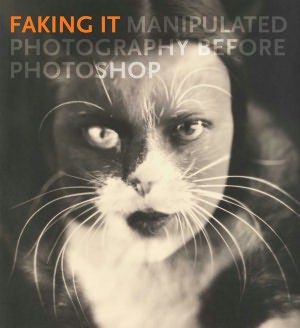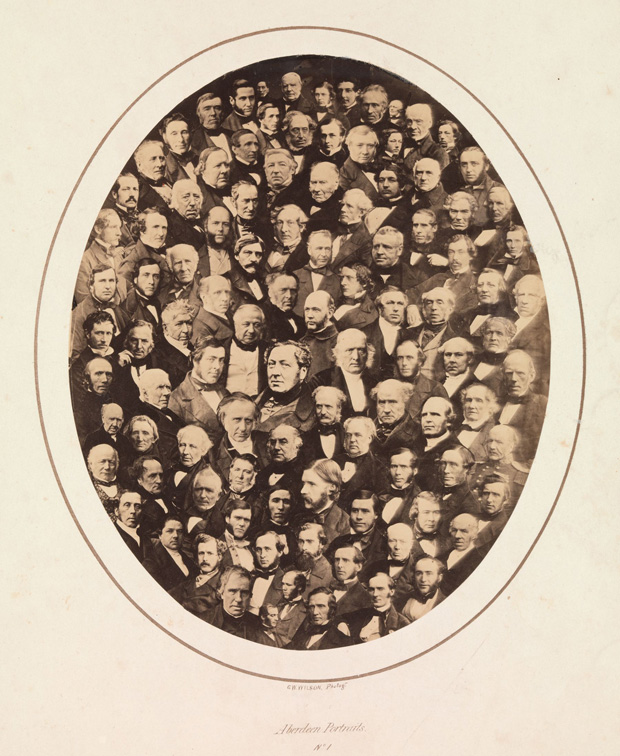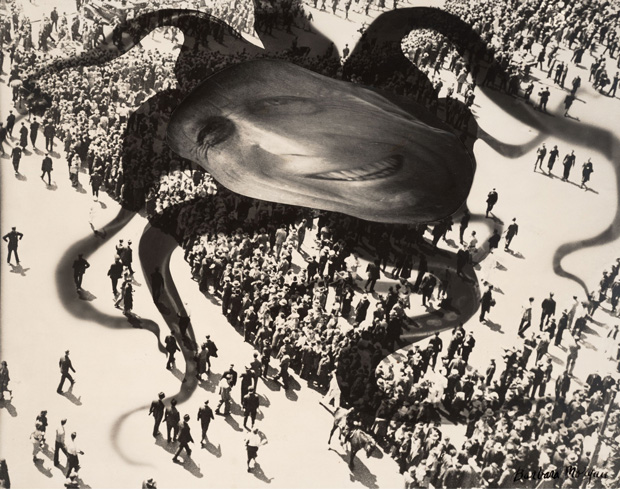

Short answer: Because subjective knowledge (and ignorance) is and has always been compatible with objective science and quantum mechanics simply transmutes all of science to a novel treatment of fundamentally subjective knowledge.
I've had an exchange about the
subjective/objective nature of the observation in quantum mechanics with Arnold Neumaier, a mathematician in Vienna.
In my answer, I clarified that what is sometimes called the "collapse of the wave function" is actually a subjective process – it's a change of someone's knowledge because he or she or it or they is/are learning about the value of an observable. This "collapse" is the change of the subjective probabilistic distributions which is also why it may occur "faster than light". The collapse "only occurs in your head".
This basic principle – which I consider absolutely essential for the right understanding of the basics of quantum mechanics – is too counterintuitive for most people and Arnold Neumaier isn't an exception. So he protested:
If this were really true, one still had to explain why we get objective science out of our subjective measurements. Therefore, there may not be more subjectivity than is in the error bars.
But this widespread "argument" is a childish logical fallacy. The objective character of the reality – as assumed by any theory of classical physics and even the "pre-scientific classical reasoning" – is (or would be) a sufficient condition to enable objective science.
However, that doesn't mean that it is a necessary condition. Since the 1920s, physicists have known that it is neither a necessary condition nor the correct way to protect the world against contradictions that could result from a generic conglomerate of "subjective viewpoints". Many processes, especially the macroscopic ones, are predicted by quantum mechanics to proceed in a way that admits a classical description with an objective reality.
But what's at least equally important, many others don't. At the fundamental level, quantum mechanics authoritatively and indisputably states that there exists no objective reality that would explain all subjective viewpoints as its reflections. Arnold Neumaier asks what's the quantum mechanics' explanation for the absence of contradictions despite the non-existence of objective reality; but his question is phrased as a rhetorical one because he isn't really interested in the answer even though the answer is arguably the most important finding of the 20th century science.
Let me discuss a few manifestations of the subjective character of existence implied by the basic postulates of quantum mechanics and explain why it leads to no contradictions.
Wigner's friend: "collapse" isn't objective
Wigner's friend is a guy closed in a lab with Schrödinger's cat. The cat dies if and when some radioactive nucleus decays – its fate is decided by a quantum-style microscopic process that may only be predicted probabilistically. Wigner is outside the lab and may still describe the whole lab, including his friend, in terms of the linear superpositions of all, including those macroscopically distinct, states that follows from Schrödinger's equation.
The question is whether the fate of the cat was decided already when Wigner's friend looked at the cat, or only when Wigner himself looked at the whole lab including the cat and his friend.
Wigner's friend may be certain that he has already made a measurement so the fate of the cat was determined rather early. However, Wigner himself only learns about the fate when he does his own measurements, so the state of the cat is determined much later.
The answer to the question "When the fate of the cat became decided and ceased to be murky?" is therefore subjective. Note that with macroscopic processes that admit a classical description, you could claim that the state of the cat was decided "immediately" and this assumption won't drive you into contradictions. But if you considered smaller, more inherently quantum objects and processes, any assumption that the system already had some particular values of observables is enough for you to be driven to wrong predictions. It's very important that quantum mechanics only describes the state of the physical systems as a "murky probabilistic superposition" of different possibilities.
Let me repeat it differently: You are allowed to assume that the observed quantities have already been facts since the moment when the information carried by them got imprinted to the environment many times and "irreversibly" decohered. If you assume that the observation became a "fact" before it decohered, you will be driven to contradictions with experiments.
However, it's also important to notice that decoherence, while extremely fast as soon as it kicks in, is never perfect. The off-diagonal elements of the density matrix in a particular basis never go to zero exactly. (Well, they are zero in
some basis because every Hermitian matrix may be diagonalized but in general, it will be a basis that mixes macroscopically distinct states to a comparable extent.)
Decoherence is one of the "irreversible" processes, much like the growth of entropy in thermodynamics. But the microscopic description of this irreversibility – whether we mean the statistical physics description of the increasing entropy, or the quantum mechanical description of the origin of decoherence – shows that the "impossibility to reverse things" is never absolute. In statistical physics, it's just unlikely that the entropy will go down; it is not impossible. Analogously, in quantum mechanics, the loss of the information about the relative phase of two complex probability amplitudes is a problem that may be "reverted" to some extent.
But once the increase of the entropy becomes macroscopic, the chances of returning the entropy to the original low value become exponentially tiny and negligible. We say that it's impossible. Similarly, the entanglement of the measured system with the environment quickly becomes so complex that we give up all the hopes to "disentangle" this entanglement.
There's no objective moment at which we may say that it has become impossible to reverse the processes. In practice, people will agree whether it's possible or not but in principle, one may imagine a more accurate extraterrestrial engineer who is capable of reversing processes we consider hopelessly irreversible.
Returning to Wigner's friend, there can't be any contradiction between Wigner and Wigner's friend because the question "When the fate of the cat became decided?" must be answered by an operational procedure and everyone understands that there's no "canonical" procedure to do so, so the result of any procedure will reflect the particular idiosyncrasies of the procedure. Wigner's friend may prepare records of the dead/alive cat taken well before Wigner returned to the lab. But Wigner may always disagree and say that these photographs have been in a linear superposition of macroscopically different states up to the moment when he returned to the lab.
There can't be any sharp contradiction because the question is an ill-defined question about philosophy, the kind of question you should avoid according to the "shut up and calculate" dictum. Moreover, no one really cares about "when the fate of the cat got decided". We may mathematically derive that if a nucleus decays, the engine will immediately kill the cat. But we don't know whether the nucleus was "objectively" in the decayed state or a linear superposition and we don't really care. What we really care about is what the fate is. Is the cat alive, or dead?
Concerning the latter question, there won't be any contradictions. The evolution in quantum mechanics \[
\ket{\text{dead cat}} \to \ket{\text{dead cat}}\otimes \ket{\text{sad Wigner's friend}} \otimes \ket{\text{sad Wigner}}
\] and similarly for "alive cat" and "happy men" guarantees correlations – using the most general quantum description, it guarantees entanglement – between the state of the cat, the state of the Wigner's friend's brain, and the state of Wigner's own brain. We may show – by a simple calculation in quantum mechanics establishing the evolution above (not by classical dogmas about the objective reality!) – that if the cat dies, it will make the "same" impact on Wigner and Wigner's friend if both of their brains are measured. If the cat survives, the measurement of the two men's brains will yield compatible results, too.
So the two men will agree whether or not the cat is alive if both of them perform the measurement. But men – and other physical systems – don't have to agree about the question whether a measurement has taken place. A measurement is a process by which you are gaining the information and whether you are gaining the information – or you want to gain it – is a subjective matter. So people may disagree about the moment.
In classical physics, we were allowed to assume that there existed an objective world that someone could in principle know in the full entirety and accuracy. Individual people's knowledge reflected this objective reality and the ignorance (and statistical tools used to describe the imperfect knowledge) were just reflections of the individuals' imperfection that could have been avoided in principle.
Quantum mechanics shows that our world doesn't work in this way, however. The probabilistic character of the values of any observables is a fundamental property of the laws of physics in our Universe. It is inevitable that the value of most observables we can measure is uncertain and "probabilistically mixed" even a femtosecond before these observables are measured. There is no agent, not even God, who would know the state of the observables a moment before they're measured. The very assumption that such a perfect being exists mathematically contradicts the fact that the operators don't commute with each other; physically, such an assumption will either lead to predictions that disagree with the experimentally measured correlations, or with locality as demanded by the special theory of relativity.
So the question "whether some observation has already become a fact and when" doesn't have any objective, canonical answer – even though many people using the same conventions and models may usually agree. But this agreement only reflects their shared taste and social conventions (i.e. the same values of "tiny probabilities" that they're already willing to identify with zero when they discuss irreversibility of various processes). It doesn't reflect any objective reality that would exist in principle.
Purity of the "right state" is a subjective question, too
People often try to imagine that many other questions have "objective answers", too. One important example is the question:
Is a particular physical system described by a pure state, or a mixed state (density matrix)?
Different observers may have different answers to this question, too. And there are many reasons for that.
First of all, the subjective character of the answer directly follows from my previous point, namely the conclusion that "the moment when the measurement took place is a subjective matter". Imagine that Wigner and his friend study any physical system, for example the spin of an electron. Wigner and his friend agree that in the initial state, it is determined by a given density matrix \(\rho\). So it's mixed. But once Wigner's friend measures the spin with respect to the \(z\)-axis, he will find out it's either "up" or "down" and the state of the electron will inevitably become pure – for Wigner's friend. However, Wigner himself will continue to evolve the whole lab via Schrödinger's equation. That means that he will ignore any hypothetical "discontinuous change" associated with the spin measurement and his description will continue to build on a mixed state. The state will be mixed for Wigner but pure for Wigner's friend.
(Even if you appreciate the discontinuity of "purity" of a state, you won't be able to measure how much "mixed" it is because neither the state vector nor the density matrix are observables. Physically, they don't come with apparatuses that could spit out a particular eigenvalue after one measurement – and the state vector isn't even an operator in any sense. The density matrices and state vectors – up to the overall phase – may only be "measured" by many times repeated experiments with the same initial state but this can't be counted as a "measurement" of any property of a single repetition of the experiment.)
There is another reason why different observers will disagree about the purity of the state. This reason is simple: a basic justification of the "density matrix" formalism is to allow for people's individual ignorance. While a pure state describes a "maximally well-known state of a physical system" in quantum mechanics, a density matrix allows you to "add the same kind of ignorance that already existed in classical physics".
Take the electron's spin. The density matrix \(\rho\) is a Hermitian \(2\times 2\) matrix with non-negative eigenvalues \(p, 1-p\). Their sum equals \(1\) because of the "total probability" normalization for the trace. If \(p=0\) or \(p=1\), the density matrix describes a pure state and may be written as \(\ket\psi\bra\psi\) for some pure state \(\ket\psi\). Moreover, for the particular state of the electron's spin, each pure state \(\ket\psi\) may be identified with the "up-spin" state with respect to a particular axis in \(\RR^3\).
If you choose both eigenvalues to be \(p=1/2\), the density matrix is one-half times the identity matrix (which is why it has this form in any basis) and it describes the "maximum ignorance" about the spin. Such a density matrix is "maximally mixed". If you don't know anything about the spin of an electron, you should assume that its state is given by this particular density matrix – a highly mixed state. However, someone else may be aware of some previous measurement of the spin that was conserved etc. So he may actually know that the spin was "up", for example. He will use a pure state to describe the electron's spin.
Again, this disagreement between the people when it comes to the state's purity can lead to no contradictions. The person who uses the mixed state will predict (twice) lower probabilities for the outcomes that depend on the spin's being up. But his predicted probabilities will be nonzero so they won't be incompatible with these events. Moreover, he will understand that the lower predicted probabilities – relatively to the guy who knew the spin was "up" – were just due to his ignorance about the "lucky" initial conditions "up". The mixed nature of the state may be said to be due to some "extra ignorance" and it's not too shocking that ignorance is subjective.
This discussion about the purity is quantum mechanics' complete counterpart of a similar discussion in classical physics. We may either describe a mechanical system by its coordinates and momenta \(x_i(t)\) and \(p_i(t)\), or we may specify a probabilistic distribution on the phase space, \(\rho(x_i,p_j;t)\). The latter may be interpreted as a tool to deal with the imperfect subjective knowledge by some people but it's possible to imagine that some "right" configuration of \(x_i(t)\) and \(p_i(t)\) exists at each moment. In quantum mechanics, density matrices play the role of the probabilistic distributions on the phase space.
However, there's still a fundamental difference between classical physics and quantum mechanics.
In classical physics, it was possible to know the positions and momenta, at least in principle, and if we knew them,
everything was unambiguously determined. The state of "maximum knowledge" in classical physics implied unambiguous predictions for everything. In quantum mechanics, the state of a "maximum knowledge" is any pure state. And even if we know that the system is in a pure state, we are only able to make probabilistic predictions for most observables.
Imagine that you use the density matrices for everything and substitute \(\rho=\ket\psi\bra\psi\) if you had a pure state instead. Then the "pure density matrices" will only differ from others by their list of eigenvalues – all of them are zero except for one that equals one. My point is that these "special density matrices" may look qualitatively similar to all other density matrices (especially in a random basis) and we have universal formulae of the type \({\rm Tr}(\rho P)\) to calculate the probabilities of \(P\) (a proposition represented by a projection operator) out of any density matrix \(\rho\), whether it is pure or mixed.
This trace formula therefore unifies the treatment of the "probability-distribution-on-phase-space-like" aspect of the probability in quantum mechanics – which already existed in classical physics and you may think that it's avoidable – with the "unavoidable" probabilistic character of the predictions that follow even from the pure state. This unification really tells you that the "probabilistic nature of the pure states" is exactly as natural and obeying the same mathematical rules as the "probabilistic nature artificially incorporated via the density matrix formalism". But it's unavoidable, too.
Physically meaningful questions have to be associated with a linear operator on the Hilbert space
In this text, I argued that many philosophical questions such as "what may count as an observation", "when did an observation exactly take place", "is the state of the physical system pure or mixed" are questions that depend on the particular observer and his description of the reality, his standards of "how much of irreversible phenomena is really irreversible" and "how small probabilities may be practically identified with zero", among other things.
These questions are not really "practically relevant" for the working of the world. What is "practically relevant" are the questions associated with actual observables and all observables are, according to the basic postulates of quantum mechanics, represented by linear Hermitian (or, in some special cases, unitary or normal) operators. Such observables include positions and momenta and angular momenta and spins of particles, numbers of particles in a given state, intensities of fields, and so on.
For these observables, the evolution equations of quantum mechanics guarantee correlations or "entanglement" that is the ultimate reason why observers will never disagree about "hardcore practical questions" whenever they are known to agree from the experience. All these correlations are analogous to the evolution that I have already mentioned,\[
\ket{\text{alive cat}} \to \ket{\text{alive cat}}\otimes \ket{\text{happy Wigner's friend}} \otimes \ket{\text{happy Wigner}}.
\] This derived fact about the evolution of an initial state of the cat-friend-Wigner physical system allows you to conclusively prove that "if the cat stays alive, both Wigner and his friend will be happy".
On the other hand, there is no rule that the observers must agree about the philosophical questions mentioned three paragraphs above, beneath the title of the section. These are not true physical questions: they're unphysical gibberish you should avoid while you "shut up and calculate". There is no linear operator on the Hilbert space that would have eigenvalues \(0\) for pure states and \(1\) for mixed states, i.e. that would answer the question "Is the state pure?". An "unpure" admixture qualitatively changes the answer to the question whether a density matrix is pure so of course, such an operator would have to be discontinuous on the space of density matrices and discontinuous operators can't be linear. So indeed, quantum mechanics doesn't imply the objective character of the answers to these unphysical questions – they actually do depend on the observer and there's no empirical evidence that there's anything wrong about the fact. The only thing that contradicts the subjective nature of these answers is people's stubbornness, bigotry, and psychological obstacles preventing people from abandoning classical physics.
It's one of the basic principles of quantum mechanics – or "shut up and calculate" quantum mechanics – that all physically meaningful questions about the Universe may be expressed by a linear Hermitian operator, an observable. Quantum mechanics gives you the universal rule to predict the probability of different answers and nothing else can be predicted. If your question isn't talking about the value of any observable, then it is unphysical gibberish. Way too many people – including people considered to be physicists – still haven't learned to think in the quantum way. They keep on trying to "reduce" important questions about our world into a language of philosophers and other cranks, a language that implicitly makes many totally wrong assumptions such as the assumption that there fundamentally exists an objective reality in the classical sense.
Instead of specifying observables (linear operators on the Hilbert space) and calculating their eigenvalues and their probabilities of individual eigenvalues given some knowledge about the state, they keep on asking whether some "cloud here" affects another "cloud there" or whether it "collapses", assuming that the clouds objectively exist in the classical sense. That's not a good starting point to understand the essence of modern physics.
And that's the memo.

















 “The painter constructs, the photographer discloses,” Susan Sontag famously asserted in On Photography. But in the quarter century since, the rise of digital photography and image manipulation software has increasingly transmogrified the photographer into a constructor of reality, a reality in which believing is seeing. Still, image manipulation dates much further back — in fact, to the dawn of photography itself. Faking It: Manipulated Photography Before Photoshop (public library), the companion book to the Metropolitan Museum of Art exhibition of the same title, traces the evolution of image manipulation from the 1840s to the 1990s, when computer software first began to revolutionize the alteration of photographs.
“The painter constructs, the photographer discloses,” Susan Sontag famously asserted in On Photography. But in the quarter century since, the rise of digital photography and image manipulation software has increasingly transmogrified the photographer into a constructor of reality, a reality in which believing is seeing. Still, image manipulation dates much further back — in fact, to the dawn of photography itself. Faking It: Manipulated Photography Before Photoshop (public library), the companion book to the Metropolitan Museum of Art exhibition of the same title, traces the evolution of image manipulation from the 1840s to the 1990s, when computer software first began to revolutionize the alteration of photographs.












 Brain Pickings has a free weekly newsletter and people say it’s cool. It comes out on Sundays and offers the week’s best articles. Here’s what to expect. Like? Sign up.
Brain Pickings has a free weekly newsletter and people say it’s cool. It comes out on Sundays and offers the week’s best articles. Here’s what to expect. Like? Sign up.













